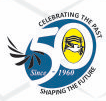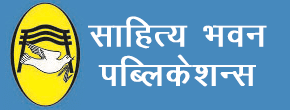Internet & World Wide Web Programming Book For B.Com. Hons. Part III of Mahatama Jyotiba Phule Ruhelkhand University Bareilly (MJPRU), Bastar University, Pt. Ravishankar Shukla University Raipur (PRSU)
Internet is the largest, widest and complete as well as complex learning tool in the world. Through the Internet, we can find knowledge resources to study in any discipline, in which we can communicate quickly and effectively with others who are working in the same field. The information available on the web can assist us in fields like education, information system, sales and manufacturing, entertainment, home, personal management, banking, business, and commercial activities, insurance, etc. With the growing use of the Internet in all these activities, the technologies associated with it are also changing very rapidly. Those new technologies and application areas of the internet coming into existence have changed the overall scenario of the computer industry today. This situation is self-evident for the need for such a book.
This book is about the different areas of study in the field of Internet and World Wide Web technology. It focuses mainly on basic concepts and ground rules of the Internet and Internet-enabled services, including web site designing, the security of data and search engines, etc. The main objective of this book is to provide comprehensive knowledge of all those important areas of these fields. It is written as a text of “Internet and World Wide Web” and based on the syllabus of B.Com. III of various universities in India.
This book comprises five units. The first unit is on the mechanism of the Internet which deals with the basic concept of the Internet OSI reference model, mechanism of sending and receiving of data across the networks and e-mail. The next unit is dedicated to the various Internet-enabled services like e-mail, Usenet and Newsgroup, File Transfer Protocol, W3C, World Wide Web, and its associated topics. Unit three consists of basic and advanced concepts relating to designing Web Site, HTML and its versions, web browsing and some popular web browsers. Unit four focuses on the security of data and information; it deals with major issues related to the security of data. The last unit is related to search tools, their categories, functioning, features, and some popular search engines.
Internet & World Wide Web Programming Syllabus For B.Com. Hons. Part III of Mahatama Jyotiba Phule Ruhelkhand University Bareilly (MJPRU), Bastar University, Pt. Ravishankar Shukla University Raipur(PRSU)
Unit-I: The mechanism of the Internet: Distributed computing; Client-server computing; Internet Protocol; Protocol Stack; Open System Interconnection Reference Model (OSIRM) based on the International Organisation for Standardisation (ISO) (Application layer, presentation layer, Session layer, Transport layer, Network layer, Data link layer, and physical layer). TCP/IP protocol suite model; Mechanism of transmitting the message across the network and function of each layer; Processing of data at the destination; Mechanism to log on to the network; Mechanism of sending and receiving E-mail.
Unit-II: Internet-Enabled Services; Electronic mail (E-mail); Usenet and newsgroup; File Transfer Protocol (FTP); Telnet; Finger; Internet Chat (IRC); Frequently asked questions (FAQ); The World Wide Web Consortium (W3C) – Origin and evolution; Standardising the Web; W3C members; W3C recommendations; Browsing and searching; Browsing and information retrieval; Exploring the World Wide Web; Architecture of World Wide Web; Hyperlink; Hypertext Transfer Protocol (HTTP); AddressURL.
Unit-III: Designing Web Site/Web Page: WW operations, Web standards, HTML – concept and version; Naming scheme for HTML Documents; HTML editor; Explanation of the structure of the homepage; Elements in HTML documents; XHTML, CSS, Extensible Stylesheet Language (XSL);
Tips for designing web pages. Web Browsing, Browser; Basic functions of web browsers; Browsers with advanced facility; Internet explorer; Netscape Navigator; Netscape Communicator.
Unit-IV: Security of Data/Information: Security; Network Security; PINA factor privacy; integrity, non-repudiation, authentication; SSL; Encryption; Digital signature; Digital certificate; Server security; Fire-wall; Password; Biometrics; Payment security; Virus protection; Hacking.
Unit-V: Search Engine/Directories: Directory; General features of the search engines; Approaches to website selection; Major search engines; Specialised search engines; Popular search engines/directories; Guidelines for effective searching; A general approach to searching.
Internet & World Wide Web Programming Book Contents
- The Mechanism of the Internet
- Internet-Enabled Services
- Designing Web Site/Web Page
- Security of Data/Information
- Search Engine/Directories


















Reviews
There are no reviews yet.